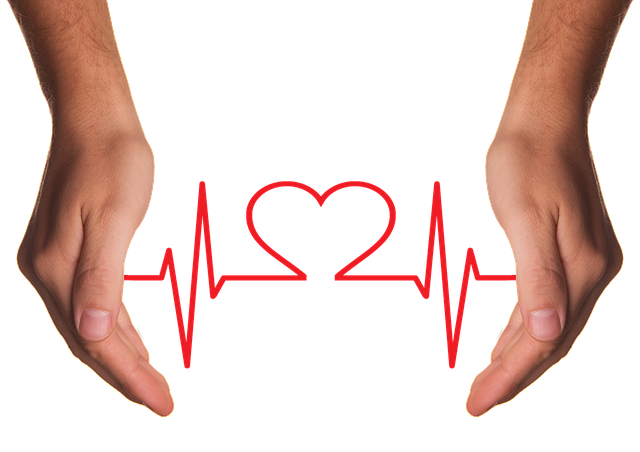When it comes to seeking medical attention, there are a variety of options available to patients. One common question that arises is whether to go to an urgent care facility or an emergency room. Each has its own advantages and limitations, and it’s important to understand the differences between the two in order to make an informed decision.
In this blog post, we’ll explore the key differences between urgent care and emergency room visits, the types of medical conditions each is equipped to handle, and the associated costs.
Urgent Care: Overview and Services

Urgent care facilities are walk-in clinics that offer medical care for non-life-threatening illnesses and injuries. They are designed to provide prompt care for patients who are unable to see their primary care physician during regular office hours, and are typically open outside of regular business hours, including evenings and weekends.
Urgent care centers are staffed by physicians and other medical professionals who are equipped to handle a wide range of medical conditions, including:
Minor injuries (sprains, cuts, bruises)
Fevers, flu-like symptoms
Respiratory infections
Urinary tract infections
Allergies and allergic reactions
Minor burns
Urgent care facilities may also offer diagnostic services such as X-rays, blood tests, and other lab work. They can provide referrals to specialists and other healthcare providers if necessary.
One key advantage of urgent care facilities is that they offer a much shorter wait time than emergency rooms. Patients are typically seen within 30 minutes, and most visits can be completed within an hour or two. Additionally, the cost of an urgent care visit is typically lower than that of an emergency room visit, making it a more affordable option for patients who do not have insurance or have high deductibles.
Costs Associated with Urgent Care

The cost of an urgent care visit is typically lower than that of an emergency room visit. The average cost of an urgent care visit is around $150, while the average cost of an emergency room visit is over $1,000.
Many insurance plans cover urgent care visits, but it’s important to check with your insurance provider to confirm coverage. Some urgent care facilities also offer a sliding fee scale or payment plans for those who are uninsured or underinsured.
Emergency Room: Overview and Services

Emergency rooms are medical facilities that provide immediate medical attention to those experiencing life-threatening conditions, such as heart attacks, strokes, and severe injuries. They are equipped with a wide range of medical equipment and highly trained medical professionals to provide rapid treatment and stabilization.
Emergency rooms are open 24/7 and are typically attached to hospitals. They can handle a wide range of medical emergencies, including:
Severe injuries (broken bones, head injuries)
Chest pain
Shortness of breath
Seizures
Severe allergic reactions
Loss of consciousness
Emergency rooms also provide diagnostic services such as X-rays, CT scans, and other imaging tests, as well as blood tests and other lab work. They can provide referrals to specialists and other healthcare providers if necessary.
One key advantage of emergency rooms is that they are able to provide care for life-threatening conditions that require immediate attention. Additionally, emergency rooms are typically equipped with a wider range of medical equipment than urgent care facilities.
Costs Associated with Emergency Room
Emergency room visits are significantly more expensive than urgent care visits. The average cost of an emergency room visit is over $1,000, and costs can easily run into the tens of thousands of dollars for more complex medical conditions.
Most insurance plans cover emergency room visits, but it’s important to check with your insurance provider to confirm coverage. Patients who are uninsured or underinsured may be eligible for financial assistance programs offered by the hospital.
Urgent Care vs. Emergency Room: How to Decide

Now that we’ve explored the key differences between urgent care and emergency room visits, how do you decide which option is best for your needs? Here are some factors to consider:
Severity of the medical condition: If you are experiencing a life-threatening condition such as chest pain, shortness of breath, or loss of consciousness, go to the emergency room immediately. Urgent care facilities are not equipped to provide the level of care needed for these types of conditions.
Time of day: Urgent care facilities are typically open outside of regular business hours, making them a more convenient option for patients who need medical attention outside of traditional office hours.
Wait time: If you need medical attention quickly but your condition is not life-threatening, urgent care may be the best option. Wait times at urgent care facilities are typically shorter than those at emergency rooms.
Cost: If cost is a major concern, urgent care is typically a more affordable option than the emergency room.
A Look at the Personnel Who Work in Urgent Care Centers versus Emergency Rooms

It’s important to note that some medical conditions may initially seem non-life-threatening but can quickly escalate into an emergency. If you’re unsure whether your condition warrants a trip to the emergency room, it’s better to err on the side of caution and seek immediate medical attention.
The personnel who work in an emergency room (ER) and an urgent care facility are similar in many ways, but there are some key differences between the two. Here’s an overview of the types of personnel you might encounter in each type of healthcare facility.
Emergency Room Personnel:
Emergency Physicians: These are doctors who specialize in treating patients with urgent and life-threatening conditions. They are trained to make quick and accurate diagnoses, stabilize patients, and manage medical emergencies.
Nurse Practitioners and Physician Assistants: These healthcare providers work under the supervision of a physician and can perform many of the same tasks, such as prescribing medications and ordering diagnostic tests.
Nurses: Emergency room nurses are highly trained in triage, trauma, and critical care. They work closely with emergency physicians to assess patients’ conditions, administer medications, perform diagnostic tests, and monitor vital signs.
Emergency medical technicians (EMTs): EMTs are trained to provide basic medical care in emergency situations. They may work in ambulances or as part of a hospital’s emergency response team.
Paramedics: Paramedics are trained to provide advanced life support in emergency situations. They may administer medications, perform advanced airway management, and use specialized equipment to monitor patients’ conditions.
Radiology technicians: Radiology technicians are trained to perform diagnostic imaging tests, such as X-rays, CT scans, and MRIs. They work closely with emergency physicians to provide timely and accurate diagnoses.
Urgent Care Personnel:
Urgent Care Physicians: These doctors are trained to diagnose and treat a wide range of non-life-threatening medical conditions, such as infections, minor injuries, and illnesses. They may also provide preventative care, such as vaccinations and physical exams.
Nurse Practitioners and Physician Assistants: These healthcare providers work under the supervision of a physician and can perform many of the same tasks, such as prescribing medications and ordering diagnostic tests.
Registered Nurses: Urgent care nurses work alongside physicians to assess patients’ conditions, provide treatments, and administer medications.
Medical Assistants: Medical assistants may perform administrative tasks, such as scheduling appointments and taking patient histories, as well as basic medical tasks, such as taking vital signs and administering medications.
Radiology technicians: As in the ER, radiology technicians may be employed in urgent care facilities to perform diagnostic imaging tests.
In both emergency rooms and urgent care facilities, the staff work together to provide the best possible care for patients. However, the types of personnel and their roles may differ based on the level of care needed by patients. Emergency rooms require highly trained and specialized personnel who can quickly diagnose and treat life-threatening conditions, while urgent care facilities typically provide care for less serious medical issues. Understanding the types of personnel who work in each type of facility can help patients know what to expect during their visit and help them make informed decisions about their healthcare.
Here are 10 tips to help you prepare for a visit to an urgent care facility:
Research the facility ahead of time:
Do some research on the urgent care facility you plan to visit. Look up reviews online to see what other patients have said about their experiences.
Bring your ID and insurance information:
Make sure to bring your government-issued ID and insurance information with you to the urgent care facility.
Know your medical history:
Be prepared to provide the urgent care staff with your medical history, including any current medications you’re taking, allergies, and past surgeries or hospitalizations.
Bring a list of your symptoms:
Write down your symptoms and any questions you have ahead of time, so you don’t forget anything during your visit.
Bring a friend or family member:
If possible, bring a friend or family member with you to the urgent care facility for support.
Wear comfortable clothing:
Dress comfortably and wear shoes that are easy to take off, as you may need to change into a gown for certain medical tests.
Be prepared to wait:
While wait times at urgent care facilities are typically shorter than those at emergency rooms, you should still be prepared to wait for a bit.
Ask questions:
Don’t be afraid to ask questions about your diagnosis, treatment plan, or medication instructions.
Follow up with your primary care physician:
After your visit, make sure to follow up with your primary care physician to ensure that your treatment plan is in line with your overall health goals.
Keep track of your medical records:
Keep track of your medical records and any prescriptions you’re given, so you can share this information with your primary care physician and future healthcare providers.
Here are 10 tips to help you prepare for a visit to the emergency room:

Call 911 in case of a true emergency:
If you are experiencing a life-threatening condition such as chest pain, shortness of breath, or loss of consciousness, call 911 immediately instead of driving yourself to the emergency room.
Bring your ID and insurance information:
Make sure to bring your government-issued ID and insurance information with you to the emergency room.
Bring a list of your medications:
Bring a list of all medications you’re currently taking, including the dosage and frequency.
Bring a list of your allergies:
Bring a list of any allergies you have to medications, food, or other substances.
Bring a friend or family member:
If possible, bring a friend or family member with you to the emergency room for support.
Be prepared for a longer wait time:
Emergency rooms are designed to handle life-threatening conditions, so wait times can be longer than at urgent care facilities.
Be prepared for a physical exam:
Expect to receive a physical exam, which may include checking your vital signs and asking about your medical history.
Be prepared to answer questions:
Be prepared to answer questions about your symptoms, medical history, and any medications or supplements you’re taking.
Ask questions:
Don’t be afraid to ask questions about your diagnosis, treatment plan, or medication instructions.
Follow up with your primary care physician:
After your visit, make sure to follow up with your primary care physician to ensure that your treatment plan is in line with your overall health goals.
Remember, emergency rooms are designed to handle life-threatening conditions. If you’re unsure whether your condition warrants a trip to the emergency room, don’t hesitate to contact your primary care physician or insurance provider for guidance.
Conclusion
Both urgent care facilities and emergency rooms provide important medical services, but they are designed to handle different types of medical conditions. Urgent care facilities are ideal for non-life-threatening conditions that require prompt medical attention, while emergency rooms are equipped to handle life-threatening conditions that require immediate care.
When deciding between urgent care and the emergency room, it’s important to consider the severity of your medical condition, the time of day, wait times, and cost. Ultimately, the most important factor is to seek medical attention when you need it, regardless of which option you choose.
If you’re still unsure which option is best for your needs, don’t hesitate to contact your primary care physician or insurance provider for guidance. They can help you determine the best course of action based on your individual medical needs and financial situation.
Don’t let health concerns hold you back – take control of your well-being with Vivagen Health! Our affordable and accessible healthcare services make it easy to get the expert care you need, when you need it. With telemedicine visits starting at just $29 and in-person visits starting at $59, you can trust us to provide top-quality care at a price you can afford. And for just $29, our Entelemed clinics offer vital checks, lab tests, strep and COVID tests, and more with our Healthcare Providers. Don’t wait – book your appointment today and experience the quality care you deserve!
